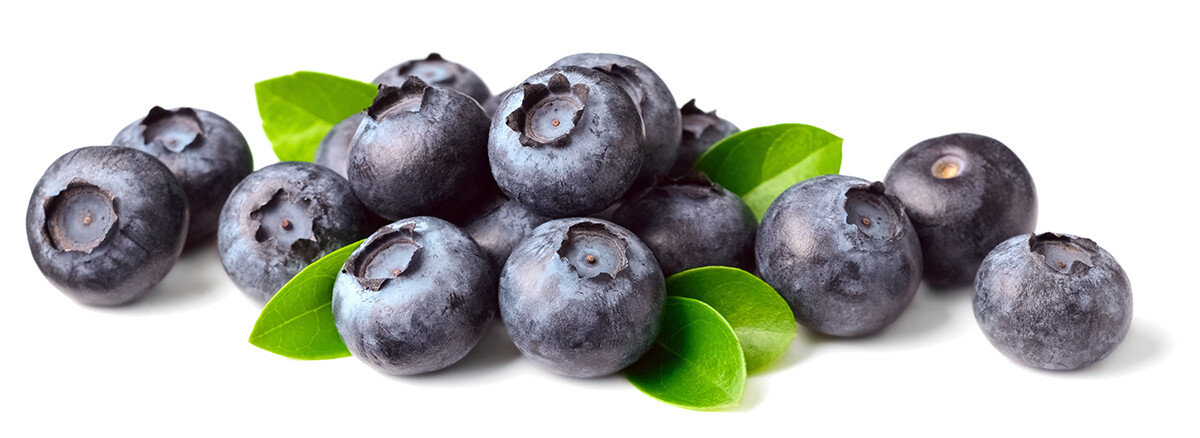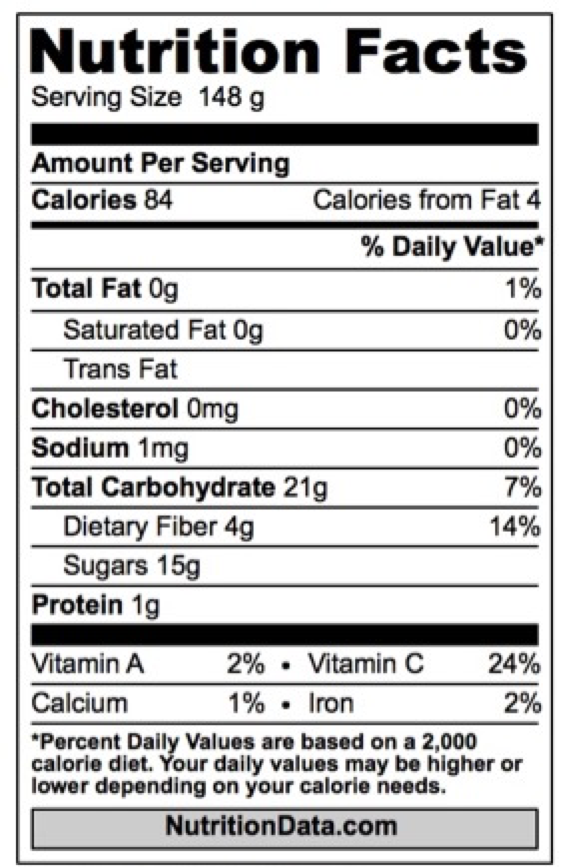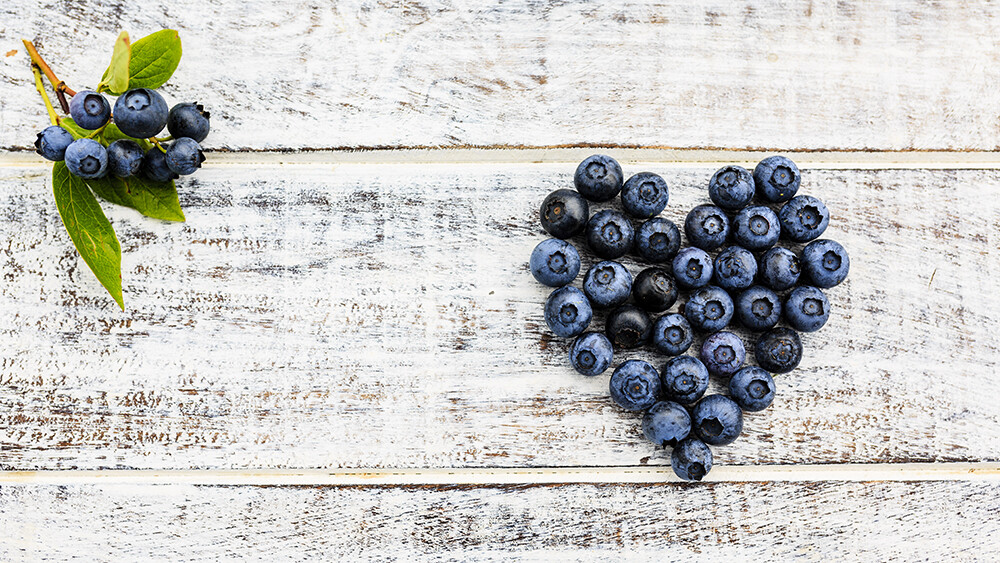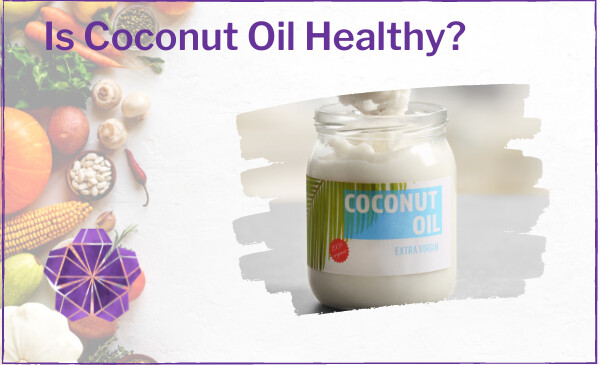
BLUEBERRIES.... SUPERFOOD, OR JUST YUMMY?
The word ’superfood’ has been bandied around often these days. Just look in your local supermarket and you’ll find food manufacturers claiming everything from coconut water to goji berries are ‘superfoods’.
Blueberries, according to Californian farmers’ conglomerate, Giant®, are the most super of all superfoods (2). But are Blueberries Super? Or are they just a yummy fruit?
Blueberries are part of the Vaccinium genus of plants that includes bilberries, cranberries and grouseberries. Vaccinium are native to many parts of the world, including North America and Europe and are farmed in Asia and Australia (7).
Blueberries are mainly grown in temperate and cool zones and are available all year round due to different growing seasons and climates across six Australian states (8).
Blueberries are a nutritious fruit and high in Vitamin.C. One cup of blueberries contains about a quarter of an adult’s daily Vitamin.C requirements (9).
Vitamin C is important for synthesis of collagen, hormones and neurotransmitters, and is a powerful antioxidant (10).
Blueberries are also high in fibre, and have a low glycaemic load, which can help improve glucose and insulin metabolism (11).

Nutritional information for 1 cup of raw fresh blueberries (www.nutritiondata.com)
Blueberries have many beneficial phytonutrients. They get their rich dark blue colour from anthocyanins, dark purple/blue plant pigments found also in black cherries (7).
Anthocyanins are types of flavonoids – antioxidant compounds that assist in neutralising cell damaging reactive oxygen species (ROS) or free radicals, and reducing inflammation (12).
Anthocyanins in blueberries are also anti-carcinogenic and anti-atheroschlerotic (11).
Anthocyanin levels differ between blueberry cultivars, with the darkest skinned fruits containing the most antioxidants (12).
As these phytonutrients are water soluble, the risk of toxicity by overeating blueberries is very low (13).
Blood sugar control
Eating blueberries and other vaccinium fruit can assist with maintaining normal glucose metabolism.
A 2010 randomised controlled study of 32 obese non-diabetic insulin resistant adults showed that those consuming 45gm of freeze dried blueberry powder per day, improved their insulin sensitivity by 22% (4).
Another study administered diabetic subjects with bilberry extract equivalent to 50gm of fresh berry and found that, after eating, participants’ blood glucose and insulin levels dropped by 18% compared to participants not taking the bilberry extract (14).
Cardiovascular Benefits
Anthocyanins in blueberries may protect against dyslipidaemia, hypertension and other cardiovascular diseases (1).
In a recent review of animal and human studies by Cutler, Peterson and Babu (2016), blueberries were found to have multiple cardiovascular benefits (15).
One study, of over 90,000 American women, found a significant negative correlation between habitual intake of blueberries and myocardial infarction (16).
Another study gave participants blueberry powder equivalent to 250gm of fresh berries per day for 6 weeks. At the end of the treatment, participants had increases in natural killer cells (immune function) and decreases in blood pressure and arterial stiffness (17).
Memory and Cognition
Blueberries may help with brain function and memory.
A recent study supplemented healthy older adults with blueberry concentrate equivalent to 387mg of anthocyanins daily for 12 weeks. Pre- and post- testing found improvements in cognitive function and working memory (5).
Similarly, another study supplemented older adults with mild cognitive impairment with blueberry powder containing 269mg of anthocyanins (about the same as a cup of fresh blueberries) for 16 weeks.
Functional MRI demonstrated that blueberry supplementation enhanced neural activation in the brain during working memory tasks (18).
Fresh, Canned, Frozen or Dried?
Fresh: Blueberries often are eaten fresh and raw however they can be dehydrated, powdered, juiced, frozen or cooked.
Fresh blueberries contain the most anthocyanins and other antioxidant phytonutrients when ripe so should be harvested at peak ripeness (8).
Blueberries are perishable and prone to mould and other microorganisms that can spoil the fruit (19). Stored in a cool, dry environment such as a refrigerator, they can last for about 1-2 weeks post-harvest without significant loss in antioxidant capacity (1).
Canned: Canning blueberries without blanching can reduce the concentration of total anthocyanin and phenolic compounds by about two thirds. However, blanching the blueberries before canning retains twice as many of these compounds.
The difference may be because the heat of blanching ruptures the skin cell membranes allowing for more bioavailability of the anthocyanins (20).
Despite these losses, the total antioxidant ability of the fruit is only reduced by 50% (unblanched) and 7% (blanched) of fresh berries, possibly because of the interaction of other bioactive vitamins and anthocyanin polymers formed during the canning process (20).
Fermented: Sterilisation and fermentation of blueberries also results in considerable anthocyanin losses.
Sterilisation temperatures over 80˚C results in degradation of total anthocyanins content by about 29% whilst fermentation at 37˚C for 40 hours reduces anthocyanins by 46% (21).
Frozen: Freezing blueberries does not decrease the anthocyanin content or antioxidant capacity of the fruit (22), making them a convenient alternative to fresh berries all year round.
Dried: Whilst the drying process reduces the total anthocyanin content of blueberries by between 40-50%, the antioxidant capacity of the anthocyanins is as potent as fresh berries (22) making dried blueberries or blueberry powder another convenient alternative to fresh fruit.
Organic or Conventional?
Although fruit nutrition composition varies between farms and geographic location, a 2008 study confirmed that organic blueberries contain more phytonutrients, sugars and vitamins than conventionally grown berries (23).
Compared to conventionally grown fruit, samples of organic blueberries tested contained 20% more fructose, 10% more citric acid, and had 1.6 times the antioxidants, anthocyanins and phenols (23).
Super? Or just yuMmy fruit?
Current research suggests that blueberries have more health protecting phytonutrients than any other fruit (12). Their benefits extend across multiple systems including neurological, cardiovascular and circulatory systems.
The claim that blueberries are a “superfood” made by the blueberry growers conglomerate, Giant®, appears to have merit, and I love to include them in my daily diet.
How about you?
Post your favorite way to eat blueberries in the comments below.
Join my Facebook Group, the Fabulous Health Community for more plant-based goodness and to connect with people on the journey to Fabulous Health.
Are you ready for change? Check out my new webinar The No.1 Secret to Permanent Weight Loss.
References:
1. Manganaris GA, Goulas V, Vicente AR, Terry LA. Berry antioxidants: small fruits providing large benefits. J Sci Food Agric. 2014;94(5):825-33.
2. California Giant Berry Farms. Blueberries [Internet]. 2017 [Cited 1/4/17]. Available from: https://www.calgiant.com/blueberries.
3. Nutrition Australia. [Internet]. 2017 [Cited 10/4/17]. Available from: http://www.nutritionaustralia.org/.
4. Stull AJ, Cash KC, Johnson WD, Champagne CM, Cefalu WT. Bioactives in blueberries improve insulin sensitivity in obese, insulin-resistant men and women. J Nutr. 2010(10):1764.
5. Bowtell JL, Aboo-Bakkar Z, Conway M, Adlam A-LR, Fulford J. Enhanced task related brain activation and resting perfusion in healthy older adults after chronic blueberry supplementation. Appl Physiol Nutr Metab. 2017.
6. Department of Health and Ageing. Australian Dietary Guidelines. Canberra: Commonwaelth of Australia; 2013. p. 213.
7. Botanical Online. Blueberries [Internet]. 2017 [Cited 1/4/17]. Available from: http://www.botanical-online.com/english/blueberry.htm.
8. Australian Blueberries. Australian Blueberries [Internet]. Australia: Australian Blueberry Growers Association; 2017. [Cited 6/4/17]. Available from: http://www.australianblueberries.com.au/.
9. National Health and Research Council. Nutrient reference values for Australia and New Zealand. Canberra: Commonwealth of Australia; 2006 [cited 1/4/17]. Available from: https://www.nrv.gov.au/.
10. Cameron-Smith D, Crowe, T., Rolfes, S.R., Walsh, A., Whitney, E. Understanding nutrition: Australia and New Zealand edition. Hammond F, editor. Australia: Cengage Learning; 2014. 776 p.
11. Shi M, Loftus H, McAinch AJ, Su XQ. Blueberry as a source of bioactive compounds for the treatment of obesity, type 2 diabetes and chronic inflammation. J Funct Food. 2017;30:16-29.
12. Wang SY, Chen H, Camp MJ, Ehlenfeldt MK. Flavonoid constituents and their contribution to antioxidant activity in cultivars and hybrids of rabbiteye blueberry (Vaccinium ashei Reade). Food Chem. 2012;132:855-64.
13. Yousuf B, Gul K, Wani AA, Singh P. Health benefits of anthocyanins and their encapsulation for potential use in food systems: a review. CRC Crit Rev Food Sci. 2016;56(13):2223-30.
14. Hoggard N, Cruickshank M, Moar KM, Bestwick C, Holst JJ, Russell W, et al. A single supplement of a standardised bilberry (Vaccinium myrtillus L.) extract (36% wet weight anthocyanins) modifies glycaemic response in individuals with type 2 diabetes controlled by diet and lifestyle. J Nutr Sci. 2013;2:e22-e.
15. Cutler BR, Petersen C, Anandh Babu PV. Mechanistic insights into the vascular effects of blueberries: evidence from recent studies. Mol Nutr Food Res. 2016, 0, 1–14.
16. Cassidy A, Mukamal KJ, Liu L, Franz M, Eliassen AH, Rimm EB. High anthocyanin intake is associated with a reduced risk of myocardial infarction in young and middle-aged women. Circulation. 2013;127:188-196.
17. McAnulty LS, Collier SR, Landram MJ, Whittaker DS, Isaacs SE, Klemka JM, et al. Six weeks daily ingestion of whole blueberry powder increases natural killer cell counts and reduces arterial stiffness in sedentary males and females. Nutr Res. 2014;34:577-84.
18. Boespflug EL, Eliassen JC, Dudley JA, Shidler MD, Kalt W, Summer SS, et al. Enhanced neural activation with blueberry supplementation in mild cognitive impairment. Nutr Neuro. 2017:1-9.
19. Tournas VH, Katsoudas E. Mould and yeast flora in fresh berries, grapes and citrus fruits. Int J Food Microb. 2005;105(1):11-7.
20. Syamaladevi RM, Andrews PK, Davies NM, Walters T, Sablani SS. Storage effects on anthocyanins, phenolics and antioxidant activity of thermally processed conventional and organic blueberries. J Sci Food Agr. 2012;92(4):916-24.
21. Nie Q, Feng L, Hu J, Wang S, Chen H, Huang X, et a
l. Effect of fermentation and sterilization on anthocyanins in blueberry. J Sci Food Agr. 2017;97(5):1459.
22. Lohachoompol V, Srzednicki G, Craske J. The change of total anthocyanins in blueberries and their antioxidant effect after drying and freezing. J Biomedicin Biomed Biotech. 2004;2004(5):248-52.
23. Wang SY, Chen CT, Sciarappa W, Wang CY, Camp MJ. Fruit quality, antioxidant capacity, and flavonoid content of organically and conventionally grown blueberries. J. Agric. Food Chem. 2008, 56, 5788–57.
















0 Comments